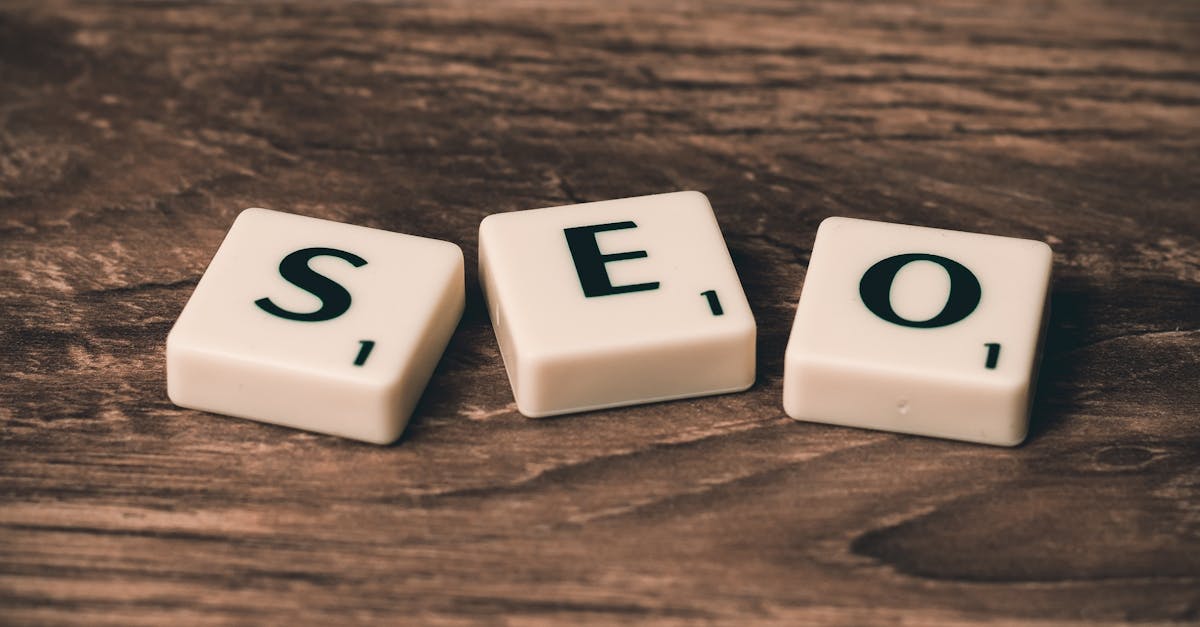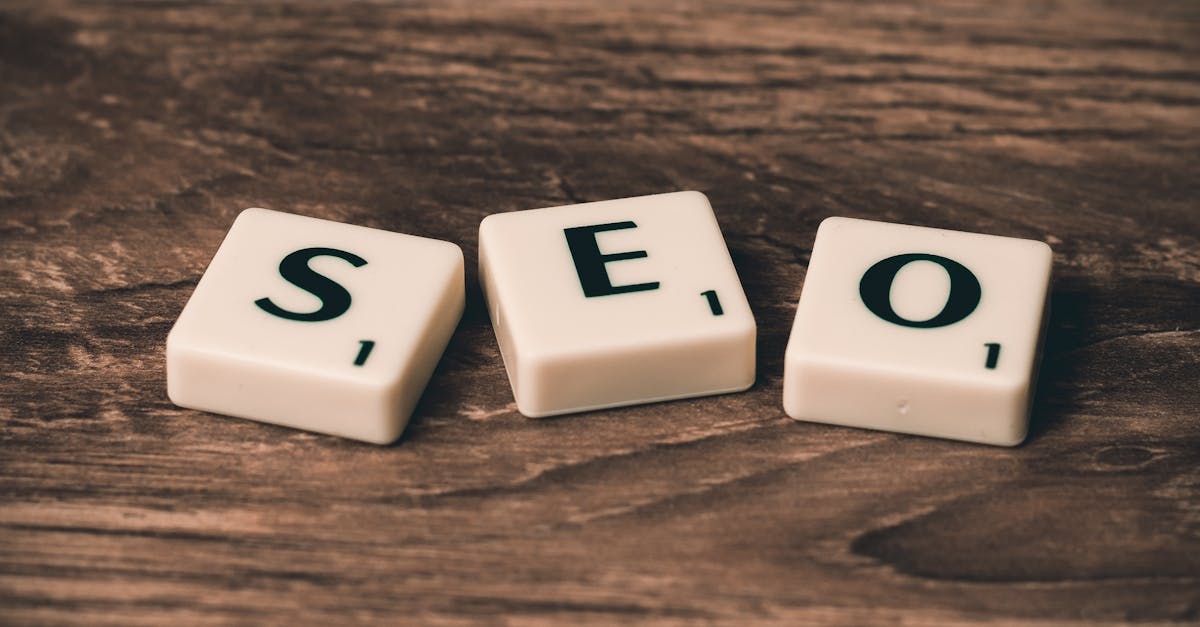
Table Of Contents
Choosing the Right Ad Format
Selecting the appropriate ad format is crucial for the success of your SEM campaign. Different formats cater to various goals and user experiences. Text ads are effective for clear messaging and strong calls to action, making them ideal for driving clicks to your website. Visual ads, such as display banners, can enhance brand awareness and engage users through eye-catching imagery. The right choice depends on your objectives and target audience.
As you consider ad formats, keep in mind how they integrate with your overall digital marketing strategy, including Search Engine Optimization (SEO). A cohesive approach ensures that your ads complement your organic search efforts. For instance, using ad copy that mirrors the keywords and themes of your website can improve your Quality Score in paid search campaigns. This synergy not only boosts your ad performance but also reinforces your brand's visibility across multiple channels.
Overview of Different Ad Types
Search engine marketing encompasses various ad formats, catering to different advertising goals. Text ads remain the most common choice, appearing prominently on search engine results pages. They consist of a headline, description, and display URL, allowing businesses to capture attention quickly. Display ads, which include images or videos, can be effective for brand awareness and attracting interest from users as they browse other websites.
Shopping ads are particularly advantageous for e-commerce businesses, showcasing products directly with images and prices. These ads can enhance visibility significantly, especially when combined with effective search engine optimization (SEO) strategies. Additionally, video ads, gaining traction across platforms, can convey richer narratives about products or services. Each format offers unique benefits, making it essential to align them with campaign objectives for optimal results.
Setting Budget and Bids
Setting a budget and determining bids are critical components of a successful SEM campaign. Establishing a clear financial framework helps guide decision-making throughout the process. Advertisers need to consider their overall marketing budget and allocate funds specifically for their SEM efforts. This includes assessing the potential return on investment (ROI) from the campaign. Keeping a close eye on expenses will ensure that the campaign remains profitable and cost-effective.
Bids represent how much you are willing to pay for each click or impression. This can impact ad placement and visibility significantly. It is important to find a balance between competitiveness and financial viability. Regularly monitoring the performance of your ads allows for adjustments to bidding strategies as necessary. Integrating targeted keywords related to Search Engine Optimization (SEO) can enhance the effectiveness of the bids and help to yield better results over time.
Strategies for Cost Management
Effective cost management is vital for the success of a SEM campaign. One approach is to allocate a daily budget that aligns with your overall marketing strategy. Monitor the performance of your ads closely, adjusting bids based on metrics such as click-through rates and conversion rates. This allows for fine-tuning of your spending, maximising return on investment. Leveraging automated bidding strategies can also help in managing costs, as these options adjust bids in real time based on the likelihood of achieving desired outcomes.
Incorporating Search Engine Optimization (SEO) practices can complement your SEM efforts, making your overall marketing mix more efficient. SEO helps improve organic rankings, which can reduce reliance on paid ads. When SEM is combined with strong SEO strategies, you can create a balanced approach that optimises visibility while controlling costs. This dual strategy allows for sustained traffic generation and enhances brand presence without excessive expenditure.
Configuring Campaign Settings
Configuring your SEM campaign settings is crucial for achieving effective results. Begin by selecting the right geographic locations where your ads will be displayed. This is vital for reaching your target audience effectively. Ensure that demographic targeting aligns with your business goals. Additionally, specify the devices on which your ads will appear. Mobile responsiveness is particularly important due to the increasing use of smartphones for online searches.
Another important aspect is to integrate your SEM efforts with your broader marketing strategy, including Search Engine Optimization (SEO). Overlapping keywords and ensuring that your ads complement organic search efforts can enhance visibility. Set appropriate start and end dates for your campaigns to control the timing of your ad display effectively. This careful configuration can help maximise your return on investment while ensuring your ads reach the right audience at the right time.
Optimising Targeting Options
Effective targeting optimises the reach of a SEM campaign. Advertisers can refine their audience based on various criteria such as demographics, interests, and behaviour. Tailoring the message to specific groups increases engagement and improves the chances of conversion. Incorporating insights from Search Engine Optimization (SEO) can enhance targeting practices. Understanding the keywords that resonate with your audience aids in crafting more relevant ads that capture attention.
Utilising remarketing techniques can also improve targeting efficiency. By re-engaging visitors who have previously interacted with your website, you can remind them of your offerings, encouraging them to complete a purchase. Aligning these strategies with data from SEO practices will provide a comprehensive view of audience preferences. This informed approach allows for continuous optimisation of ad placements, ensuring they reach the right users at the right time.
FAQS
What is SEM, and how does it differ from SEO?
SEM, or Search Engine Marketing, involves paid advertising to appear in search engine results, while SEO, or Search Engine Optimisation, focuses on organic visibility through optimising website content.
Which ad format should I choose for my SEM campaign?
The right ad format depends on your campaign goals and target audience. Common options include text ads, display ads, shopping ads, and video ads. Evaluate what aligns best with your objectives.
How do I determine my SEM campaign budget?
Start by identifying your overall marketing budget and allocate a portion for SEM based on your goals. Consider factors like competition, keyword costs, and expected return on investment to guide your budgeting.
What strategies can I use to manage costs in my SEM campaign?
To manage costs effectively, consider using automated bidding strategies, refining your keyword lists, and consistently monitoring your campaign performance to make necessary adjustments.
How can I optimise my targeting options in an SEM campaign?
You can optimise targeting by defining your audience demographics, using location targeting, implementing remarketing strategies, and choosing relevant keywords to ensure your ads reach the right potential customers.

















































